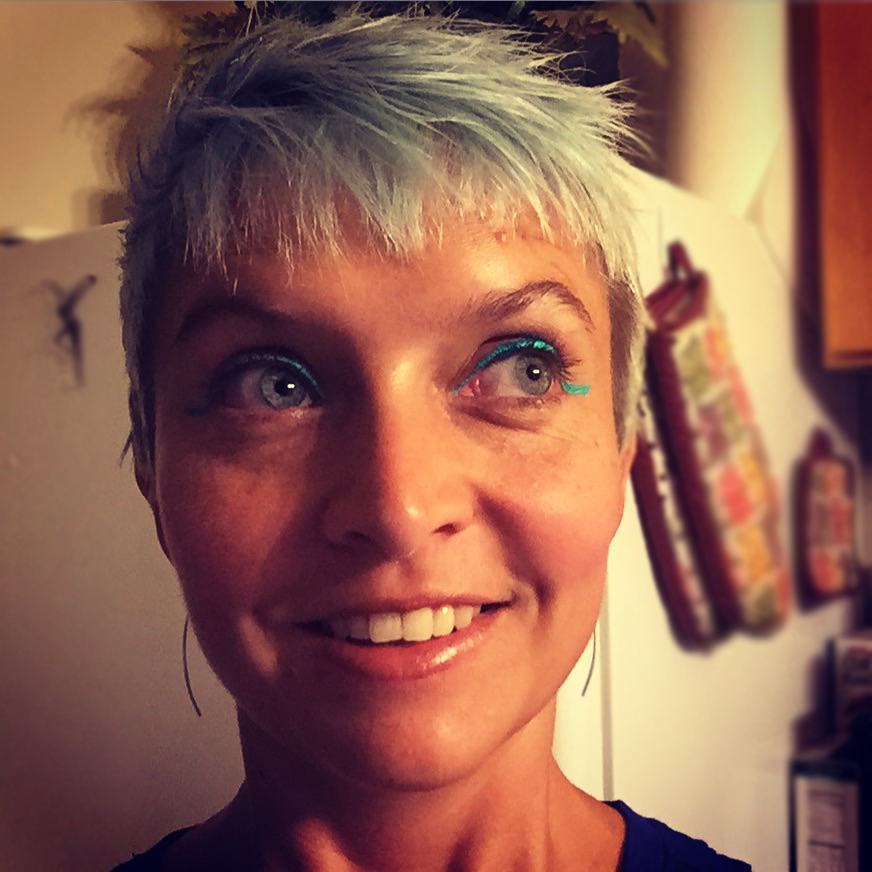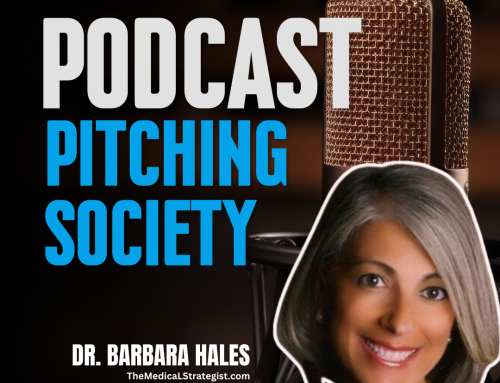Podcast: Play in new window | Download
Subscribe: RSS
In this episode, Barbara and Gin discuss:
- Getting started with your own meditation practice.
- Science backed meditation.
- Ways to meditate, other than the traditional sitting still.
Key Takeaways:
- When you take the time to do yoga or meditate, you will find time expand and open.
- The genes involved in stress response are turned off, and the genes involved in the relaxation response are turned on when meditating.
- The purpose of your mind is to do the thinking. In meditation, you can give the mind a simple task to focus on.
“You don’t have to take a ton of time to get results.” — Gin Carter
Transcription
Barbara: Welcome to another episode of Marketing Tips for Doctors. This is your host, Dr. Barbara Hales.
Today, we have a great guest by the name of Gin Carter. She is in the business of helping people and the whole world feel better. In her most recent past, she was a conservation biologist for the Smithsonian Institution.
Now, from yoga to stress management to therapeutic horseback riding and criminal justice reform Gin has her hands in many realms all still backed by her basis in science. Meditation is one of her favorite things to teach and she believes that by using meditation to connect with ourselves we are better able to connect with each other and do good work in the world. This couldn’t come at a better time. Welcome Gin!
Gin: Thank you
Barbara: Because of all of the stress that we are under now I think that meditation would help a lot of people regardless of whether you’re a health professional or people at large and I have no doubt that meditation will not only alleviate the stress that we’re feeling but make us better people as well.
Gin: Yes, that is definitely true.
Barbara: A lot of people feel like they don’t have time for self-care or to meditate aside from now when people are finding lots of time since they’re sequestered. Why is it so important to make that time?
Gin: Yes, it’s definitely important to make that time. When we go through our life and we are having stress it affects us not only mentally but also physically as well and so by taking that time it allows us to combat or counteract those stressful things that are happening in our body and our mind and helps us to be able to do our work better. So, you don’t have to take a ton of time to get results and that’s one of the things that I love teaching the most is that it can really be even just 5 minutes of your day to start.
I often see once you do take that time then people start to make more time. And that is another thing I see a lot is that people say I don’t have time to meditate or I don’t have time for yoga but when you do make the time to do it then all of a sudden you feel more expansive and you feel like you have more time when that stress starts to go away.
Barbara: So, how much time to you think we need to spend meditating each day for it to be effective.
Gin: I tell people you can start even with just 5 minutes a day, 5 minutes, 7 minutes, 10 or 20 minutes is great. You don’t need to spend hours meditating. It’s beautiful when people have a practice like that and you can do some amazing things but you really don’t need to.
I meditate every day and I cannot tell you the last time I meditated over 20 minutes. Probably the last time I was in a retreat with one of my teachers. So, you don’t have to take that much time each day to get the effects.
Barbara: How does science back the importance of meditation?
Gin: Yes, that is one of the things I love so much. There is so much science now backing the practice of meditation. I do stress management workshops and talks with a friend of mine who is also a scientist and we put up a slide that I just love. Its completely overwhelming with all of these different scientific studies that back the practice of meditation and mindfulness but one of my favorite ones that just came out last year was from Harvard and they actually showed that when people meditate the genes that are involved in the stress response are turned off and the genes that are involved in the relaxation response are turned on. So, things like that. They’ve also showed that our nerves in our brain can get rewired through meditation. All sorts of things. I encourage if you’re interested go look it up. It really is amazing.
Barbara: Well that brings up the next question is how do we meditate? Do you have any exercises that we could do for the beginner and the people that have never done meditation before?
Gin: Definitely! And we could even go through a couple here if you’d like. I like to share with all of my students and everyone I talk with that there are many different ways to meditate. A lot of times we think oh I’m supposed to just sit here and be still and be quiet and then you try it and think this isn’t working or I did it wrong or something like that.
I like to tell people 1.) You’re not doing it wrong no matter what and 2.) There are so many different ways to meditate. One of my favorite old texts was, I believe it was 120 different ways of meditating or finding the state of meditation which brings me to another point in that the place you’re trying to find in meditation is the place that we get to often in our lives.
Its just that place where you’re really not thinking about anything else so that you’re like completely involved in a task and I always like to think about like a concert musician playing the violin where he is not thinking about what to make for dinner later. He is just right there playing his piece of music. That is the place where we’re trying to access through meditation but there are many different ways that we can do that. We can go through a couple right now if you’d like Barbara.
Barbara: Yes, I would love that because I can’t tell you how many people say I can’t meditate. My mind is like bouncing off the wall. I’m thinking about 20 or 30 things at any given second and I can’t imagine how I could quiet my mind from doing that.
Gin: Right. And so that is that kind of misconception that the task is to sit and try to be quiet. I’m going to sit and make my mind be quiet and what I always say is that is not the purpose of your mind. The purpose of your mind is to do the thinking, right? Like it’s a tool and its there to think and so it tries to do that because that is what it knows how to do the best.
Rather than do than just say okay mind we’re going to sit here and be quiet what we can do with these different types of meditation is to give the mind a really simple task to focus upon. When you give the mind a simple task it says okay, I know what I’m doing now. I’ll do this little simple task and sometimes the simple task is enough to calm us down and give us the relaxation state and destress.
But, a lot of times you can do the simple tasks and get the mind to sort of quiet the fluctuations and come to a state of calm and then you can ask for more quiet. Let’s go through a couple. We can do a couple here.
Barbara: Yes, lets do that. I’m really looking forward to it.
Gin: Wonderful. So, you can go ahead and anybody listening can go ahead if you’re comfortable. If you’re seated in a chair, that’s beautiful. Make sure your feet are nice and flat on the ground. You can let your hands rest on your legs.
If you want to sit on the floor cross legged that is beautiful too. But just make sure your spine can be nice and long so that you can breathe freely. That is the most important piece wherever you sit for meditation. You don’t have to sit in a classic pose just as long as your spine can be long and you can sit upright.
Just take a nice easy inhale, and a nice easy exhale. And your eyes might be closed. If you want to keep them open that’s okay too but just let them be soft. And let your mind start to focus on your breath. This is one of the most classic things that we can do for meditation.
Just asking the mind to follow the inhale in, follow the exhale out. Just notice the sensations in your body. You can feel the air flowing in through your nostrils. You can feel your lungs taking in the air. You can feel the sides of your waist expanding outward, your chest expanding outward. Hopefully your stomach expanding outward. And everything flowing back out. As you inhale you might feel a little bit of rising up like the crown of your head reaching towards the sky. As you exhale you might feel your shoulders soften.
As so this just on its own is something that you can do even for just 3 or 5 or 10 breaths. But I like to take it to a little bit of a higher level and invite you to start to make the inhale and the exhale really, really even. So, to do that I like to just count in my mind as I inhale and then count in my mind as I exhale.
So, it might sound like inhale two, three, four; exhale two, three, four. And that gives your mind that really solid task so it doesn’t start to wonder as much so its counting. You’re counting on the inhale; counting on the exhale and just let them be nice and even.
Barbara: Well I feel relaxed already. I don’t know about you listeners.
Gin: Good, good.
Barbara: Do you have any other tips for us today?
Gin: Sure. One of my other favorite ones to do…so this breath kind of meditation is something that you can do and then kind of add onto it. So once you find your breath then you can do some other types of meditation. One of my favorite ones is really simple. We don’t have to do it right now but I’ll share it with you because you can do it on your own.
Once you find the breath you can count or not count and then you can let that go. You can do this task with your mind where you pick a word that is a word of emotion and specifically a word of emotion that you would like to feel. So that word might be something like peace or ease or calm or even right now like wellness or health, something like that.
Every time you inhale just say the word quietly in your mind and as you exhale just let that word go. It’s a really great way to shift how you’re feeling like you can even use it if you’re headed into a meeting or you’re very anxious.
You can take a moment and breathe and repeat the word calm in your mind. Whatever word you’re saying make sure that you’re saying it with the emotion of that word. Almost like you’re an actor or an actress and really start getting into the feeling of that word. Just for a few minutes or a few breaths, whatever feels good and just see if that can shift how you’re feeling. That is one of my favorite ones as well.
Barbara: That’s wonderful and I have a surprise for you all. Gin has created an online course so that you can learn how to not only master the exercises that we’ve done today but some additional ones. You can access that through GinCarter.com/online. If you’d like to learn more about Gin you can reach her at her website GinCarter.com.
Gin: That’s right. Thank you.
Barbara: Well thank you so much for being with us today gin. I feel relaxed already.
Gin: Good. I’m glad. Thank you for having me.
Barbara: This is another episode Marketing Tips for Doctors. This was your host Dr. Barbara Hales. Until next time…
Connect with Gin Carter:
Twitter: @yogawithgin
Facebook: Yoga with Gin
Website: GinCarter.com
YouTube: Yoga with Gin
Instagram: @yogawithgin
Sign up for a class with Gin here: GinCarter.com/Online
Connect with Barbara Hales:
Twitter: @DrBarbaraHales
Facebook: facebook.com/theMedicalStrategist
Business website:www.TheMedicalStrategist.com
Show website: www.MarketingTipsForDoctors.com
Email: Barbara@TheMedicalStrategist.com
Books:
YouTube: TheMedicalStrategist
LinkedIn: www.linkedin.com/in/barbarahales




